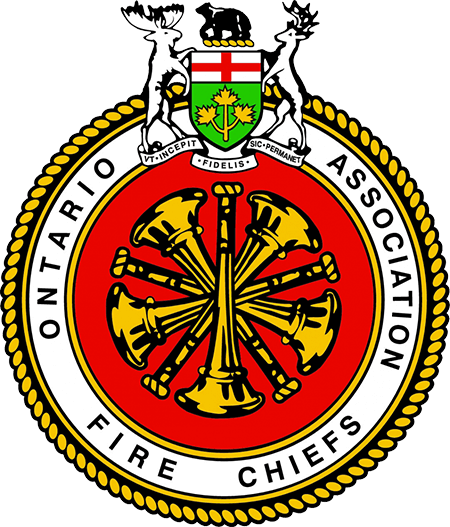With prices for everything from food to fuel soaring, Alcock wonders if the financial strain many families are under now might actually be making them less likely to fork out the money to get new alarms.
But with folks in Wainfleet now firing up their furnaces as we move into fall and inch closer to winter, the township has received a donation of smoke and carbon monoxide alarms through the Safe Community Project Zero program, an Enbridge Gas public education campaign in partnership with the Ontario Fire Marshal’s Public Fire Safety Council (FMPFSC) to get working alarms in Ontario homes.
At Wainfleet town hall on Oct. 12, representatives with Enbridge and the FMPFSC were on hand to donate 120 combination smoke and carbon monoxide alarms to Wainfleet Fire and Emergency Services during Fire Prevention Week.
The goal of the campaign, which will see 10,000 alarms distributed to residents in 50 municipalities across the province, is to bring the number of fire and carbon monoxide-related deaths down to zero. Over the last 15 years, the program has provided more than 86,000 alarms to Ontario fire departments.
Wainfleet firefighters conduct door-to-door fire safety blitzes a few times a year, typically during July when many seasonal residents are home, and the department also does year-round inspections upon request or complaint, said Alcock.
But Alcock said he still finds homes in Wainfleet lacking working smoke and fire alarms.
“Smoke alarms have been mandatory in all homes for more than 30 years, and carbon monoxide alarms have been required for almost 10 years, and yet we still find some properties missing some or all these life-saving devices,” the chief said.
“With the rising costs families are facing, smoke and CO alarms may not take the priority they should, which is why partnerships like the one with Enbridge and with the Wainfleet Volunteer Firefighters Association Christmas basket program, we can provide and deliver more (of) these units every year to families and residents in need,” he said.
Alcock said modern construction materials and methods, in conjunction with more synthetic furnishings and contents in homes, result in fires that burn hotter, faster and release more toxic gasses than ever, making alarms more vital than they’ve ever been.
“Early detection and notification through the use of properly installed and maintained smoke and carbon monoxide alarms has proven time and time again to save lives by providing the scarce time needed to escape a fire before it is too late,” he said.
Carbon monoxide alarms save lives because the gas produced through incomplete combustion is odourless and colourless, said Alcock.
Moving into cooler weather, Alcock said heating equipment such as space heaters, boilers, furnaces, wood stoves and chimneys should be inspected and cleaned prior to use.
“The use of heating equipment increases the risk of fire, which is why it is critical that every home has properly installed and working smoke/CO alarms,” the chief said.
The Ontario Fire Code makes it law that every home smoke alarms on every level. New home builds require alarms installed in each bedroom, hard-wired with battery backup, as well as a visually signalled device for the hearing impaired, he said.
The code also requires every home with fuel-burning appliances such as gas furnaces, water heaters, clothes dryers, fireplaces and woodstoves, or attached garages, to have carbon monoxide alarms installed outside all sleeping areas, Alcock said.
Richard Hammond, senior adviser of operations in Niagara for Enbridge Gas, said in a news release that properly maintaining fuel-burning equipment is the best way to reduce potential exposure to carbon monoxide, and an alarm is a “critical second line of defence” for protection.
Jon Pegg, Ontario Fire Marshal and chair of the FMPFSC, said Project Zero is something fire departments can adopt to help educate residents about the requirement for carbon monoxide alarms if homes have fuel-burning appliances or an attached garage.
“Across Ontario, there is a renewed focus on the importance of having working smoke and carbon monoxide alarms in your home,” he said.
Alcock said he’s grateful for the donation of alarms that will end up in Wainfleet homes.
“Early detection through the use of properly installed and maintained smoke and carbon monoxide alarms can mean the difference between life and death for our community, friends and families,” he said.
